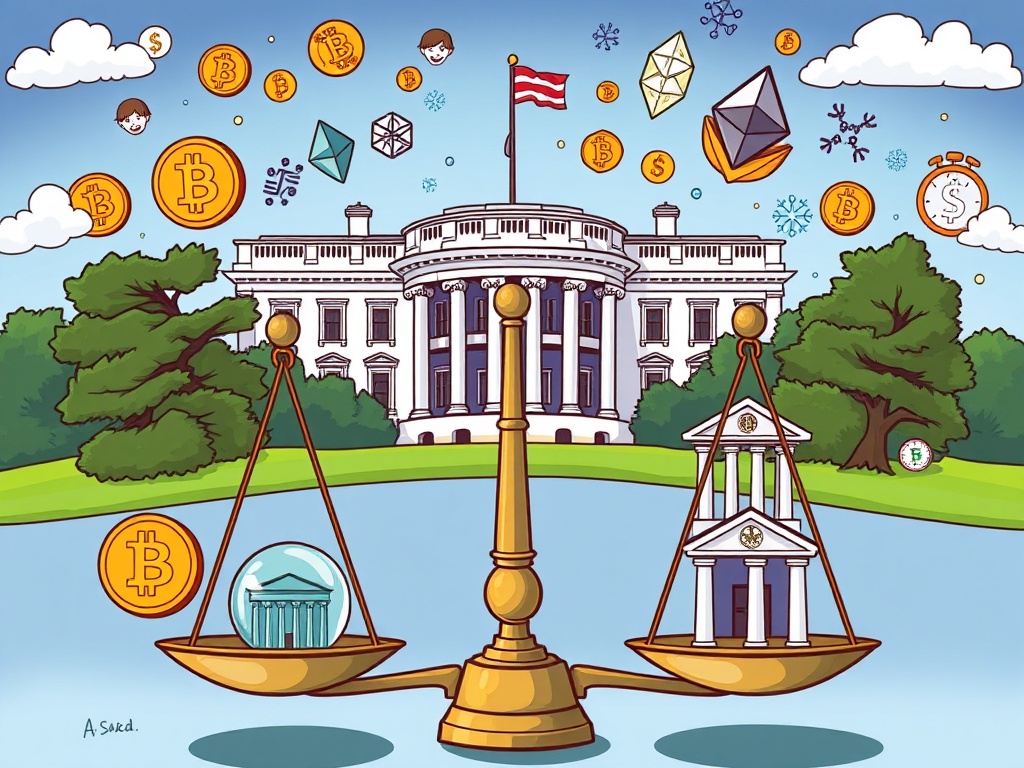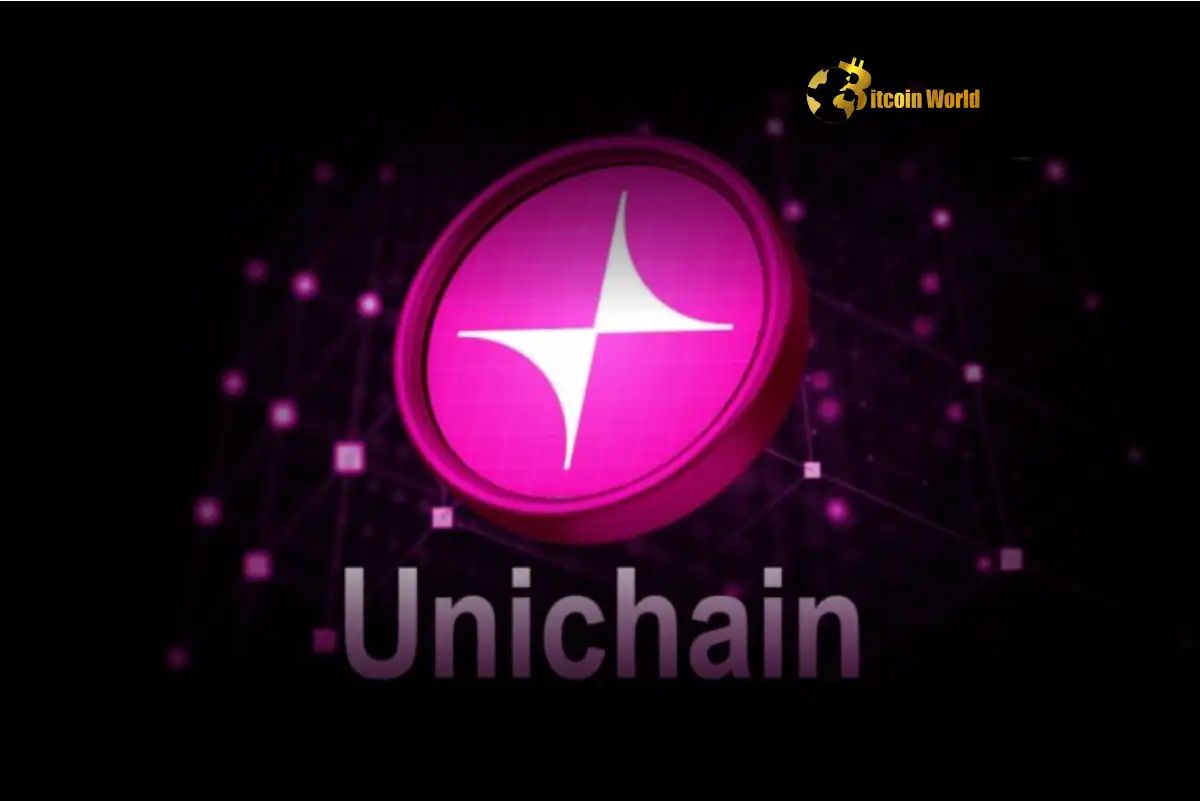BitcoinWorld

White House Digital Asset Report: Unveiling Crucial Directives for Crypto’s Future
The world of digital assets is constantly evolving, and with it, the regulatory landscape. When the White House speaks on crypto, the industry listens. Recently, a significant White House digital asset report has shed light on key policy directives that could profoundly shape the future of cryptocurrencies and blockchain technology in the United States. This isn’t just another government document; it’s a powerful statement outlining the Biden administration’s approach to digital finance, impacting everything from Bitcoin’s fate to how banks interact with crypto businesses. Let’s dive into the three crucial takeaways from this pivotal report, as highlighted by Solid Intel on X, and explore what they mean for you and the broader crypto ecosystem.
Understanding the White House Digital Asset Report: Key Directives Unpacked
The anticipation surrounding the White House’s stance on digital assets has been palpable. For months, industry participants, investors, and policymakers alike have awaited clear guidance. This latest White House digital asset report delivers just that, offering a glimpse into the administration’s strategic vision. It touches upon sensitive areas, reflecting a measured yet decisive approach to integrating digital assets into the existing financial framework while addressing potential risks.
Here’s a quick overview of the core directives:
- Seized Bitcoin will remain on the U.S. Treasury’s balance sheet: This confirms the government’s intention to hold onto confiscated digital assets rather than liquidate them immediately.
- The Federal Reserve is prohibited from issuing a CBDC: A significant development indicating a halt, for now, on the exploration of a central bank digital currency in the US.
- Banks must serve crypto businesses without regulatory bias or discrimination: A directive aimed at fostering a more inclusive financial environment for legitimate crypto enterprises.
Let’s break down each of these directives and explore their far-reaching implications.
Seized Bitcoin’s Fate: What Does the White House Digital Asset Report Say?
One of the most intriguing points from the White House digital asset report is the declaration that seized Bitcoin will remain on the U.S. Treasury’s balance sheet. For years, the U.S. government has accumulated significant amounts of Bitcoin and other cryptocurrencies through law enforcement actions, particularly from cases involving illicit activities like the Silk Road dark web marketplace or various hacking incidents. Historically, there’s been debate about what should happen to these assets – should they be sold off, held as strategic reserves, or used for other purposes?
This directive signals a clear policy choice: the U.S. government intends to retain these digital assets. What does this truly mean?
- Government as a HODLer: The Treasury effectively becomes one of the largest institutional holders of Bitcoin. This could be interpreted as a long-term bullish signal, suggesting the government sees inherent value in holding these assets rather than dumping them onto the market.
- Market Stability: By not immediately liquidating large seizures, the government avoids creating sudden supply shocks that could destabilize the market. This offers a degree of predictability for investors.
- Future Policy Flexibility: Holding these assets gives the government flexibility for future policy decisions. They could potentially be used for various purposes, from funding specific initiatives to serving as a strategic national reserve, though the report doesn’t specify such uses.
- Transparency Concerns: While the directive is clear, questions may arise regarding the transparency of these holdings and how their eventual disposition, if any, will be managed.
This decision underscores a growing understanding within government circles of Bitcoin’s unique characteristics and its potential long-term significance, moving beyond simply viewing it as a tool for illicit activities.
The CBDC Conundrum: Why is the Federal Reserve Prohibited from Issuing a CBDC?
Perhaps one of the most surprising and impactful directives within the White House digital asset report is the explicit prohibition against the Federal Reserve issuing a CBDC. A Central Bank Digital Currency (CBDC) has been a hot topic globally, with many countries, including China and European nations, actively exploring or even piloting their own digital currencies. The idea is to create a digital version of a country’s fiat currency, issued and backed by the central bank.
Why would the U.S. administration take such a definitive stance against a digital dollar, at least for now? Several factors likely contribute to this decision:
- Privacy Concerns: A major apprehension around CBDCs, especially in a country valuing individual liberties, is the potential for government surveillance and control over citizens’ financial transactions. A centralized digital currency could offer unprecedented insight into spending habits.
- Financial Stability Risks: Critics argue that a CBDC could disintermediate commercial banks, potentially leading to ‘digital bank runs’ during times of crisis as funds flow directly from commercial banks to the central bank’s digital ledger.
- Innovation vs. Control: There’s a strong belief that the private sector is better equipped to innovate in the digital payments space, particularly through stablecoins and other private digital assets, without the government stifling competition or dictating technological direction.
- Political Opposition: Significant political opposition from both sides of the aisle has voiced concerns about a CBDC, viewing it as an overreach of government power.
This directive from the White House digital asset report effectively puts the brakes on the digital dollar for the foreseeable future. While it doesn’t preclude private stablecoin innovation, it signals a cautious approach to direct government involvement in issuing digital currency, prioritizing privacy and market-led development over central control.
Leveling the Playing Field: How Will Banks Serve Crypto Businesses After the White House Digital Asset Report?
For years, cryptocurrency businesses have faced an uphill battle when it comes to accessing traditional banking services. Many banks, wary of regulatory uncertainty, perceived risks, and compliance burdens, have engaged in ‘de-risking’ – essentially avoiding or severing ties with crypto-related entities. This has left many legitimate blockchain companies struggling to find basic banking facilities, hindering their growth and innovation.
The White House digital asset report directly addresses this challenge, stating unequivocally that banks must serve crypto businesses without regulatory bias or discrimination. This is a monumental shift and offers a lifeline to the crypto industry:
- End to De-Risking: This directive aims to curb the practice of blanket rejection of crypto businesses by banks. It encourages a more nuanced, risk-based approach to client onboarding and ongoing monitoring.
- Increased Legitimacy: Access to traditional banking services is crucial for any business to operate efficiently, pay employees, and manage finances. This move grants greater legitimacy to crypto firms, enabling them to integrate more seamlessly into the broader economy.
- Fostering Innovation: By providing a stable banking environment, the report aims to foster innovation within the digital asset space. Companies can focus on building products and services rather than constantly battling for basic financial access.
- Enhanced Consumer Protection: When crypto businesses operate within regulated banking frameworks, it can indirectly lead to better consumer protection through established AML (Anti-Money Laundering) and KYC (Know Your Customer) procedures.
This particular directive from the White House digital asset report is a significant step towards bridging the gap between traditional finance and the burgeoning digital asset economy, promising a more integrated and less discriminatory financial landscape for crypto innovators.
Navigating the Future: Challenges and Opportunities
The directives outlined in the White House digital asset report present both challenges and significant opportunities for the digital asset ecosystem. While the prohibition on a Fed CBDC might disappoint some who envisioned a government-backed digital currency, it simultaneously opens doors for private sector innovation in stablecoins and other digital payment solutions.
The mandate for banks to serve crypto businesses is a massive opportunity, potentially unlocking significant capital and mainstream adoption. However, challenges remain in ensuring banks fully comply and develop the necessary expertise to onboard and manage crypto-related accounts effectively. Regulatory clarity, especially at the state level, will also be crucial for seamless implementation.
These directives collectively signal a maturation in the U.S. government’s approach to digital assets. Rather than outright bans or unbridled enthusiasm, there’s a clear move towards measured integration, risk management, and fostering responsible innovation. The focus keyword, White House digital asset report, truly encapsulates a turning point in how the nation views and intends to regulate this transformative technology.
Conclusion: A New Chapter for US Crypto Policy
The recent White House digital asset report provides invaluable clarity and direction for the burgeoning crypto industry in the United States. From the strategic decision to hold seized Bitcoin on the Treasury’s balance sheet, signaling a long-term view of digital assets, to the definitive stance against a Federal Reserve-issued CBDC, prioritizing privacy and private sector innovation, and finally, the crucial directive for banks to serve crypto businesses without bias, this report lays a foundational framework. It’s a testament to the growing recognition of digital assets as a permanent fixture in our financial future. While the path ahead will undoubtedly involve further discussions and refinements, this report marks a significant step towards a more integrated, regulated, and ultimately, more robust digital asset ecosystem in the U.S. It sets a precedent for how the nation plans to harness the potential of blockchain technology while mitigating its risks, truly opening a new chapter for crypto policy.
Frequently Asked Questions (FAQs)
Q1: What is the main purpose of the White House digital asset report?
The primary purpose of the White House digital asset report is to outline the Biden administration’s policy approach and strategic vision for regulating and integrating digital assets into the U.S. financial system, addressing both opportunities and risks.
Q2: Does the report mean the U.S. government will sell its seized Bitcoin?
No, the report explicitly states that seized Bitcoin will remain on the U.S. Treasury’s balance sheet, indicating a policy of holding these assets rather than immediate liquidation.
Q3: Why is the Federal Reserve prohibited from issuing a CBDC according to the report?
The prohibition on the Federal Reserve issuing a CBDC likely stems from concerns over privacy, potential disruption to commercial banking, and a preference for private sector innovation in digital payments, as well as significant political opposition.
Q4: How will the report impact crypto businesses seeking banking services?
The report directs banks to serve crypto businesses without regulatory bias or discrimination, which should make it easier for legitimate crypto firms to access traditional banking services, fostering growth and legitimacy within the industry.
Q5: Is this White House digital asset report a final set of regulations?
While the report provides significant policy directives, it serves as a foundational framework rather than a final set of regulations. It sets the tone and direction for future legislative and regulatory actions concerning digital assets in the U.S.
Did you find this deep dive into the White House digital asset report insightful? Share your thoughts and this article with your network on social media to spark further discussion about the future of crypto regulation!
To learn more about the latest crypto market trends, explore our article on key developments shaping Bitcoin institutional adoption.
This post White House Digital Asset Report: Unveiling Crucial Directives for Crypto’s Future first appeared on BitcoinWorld and is written by Editorial Team





